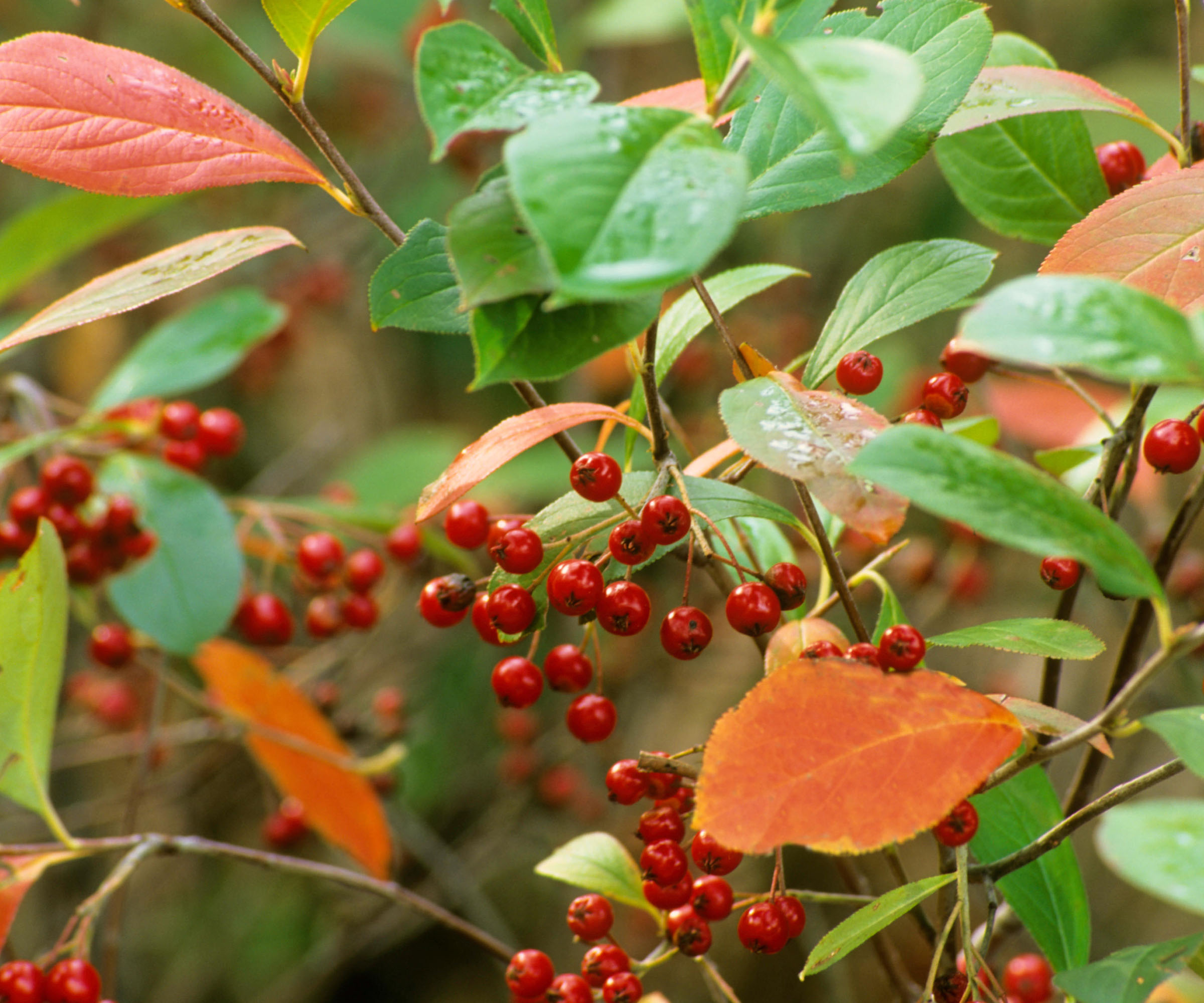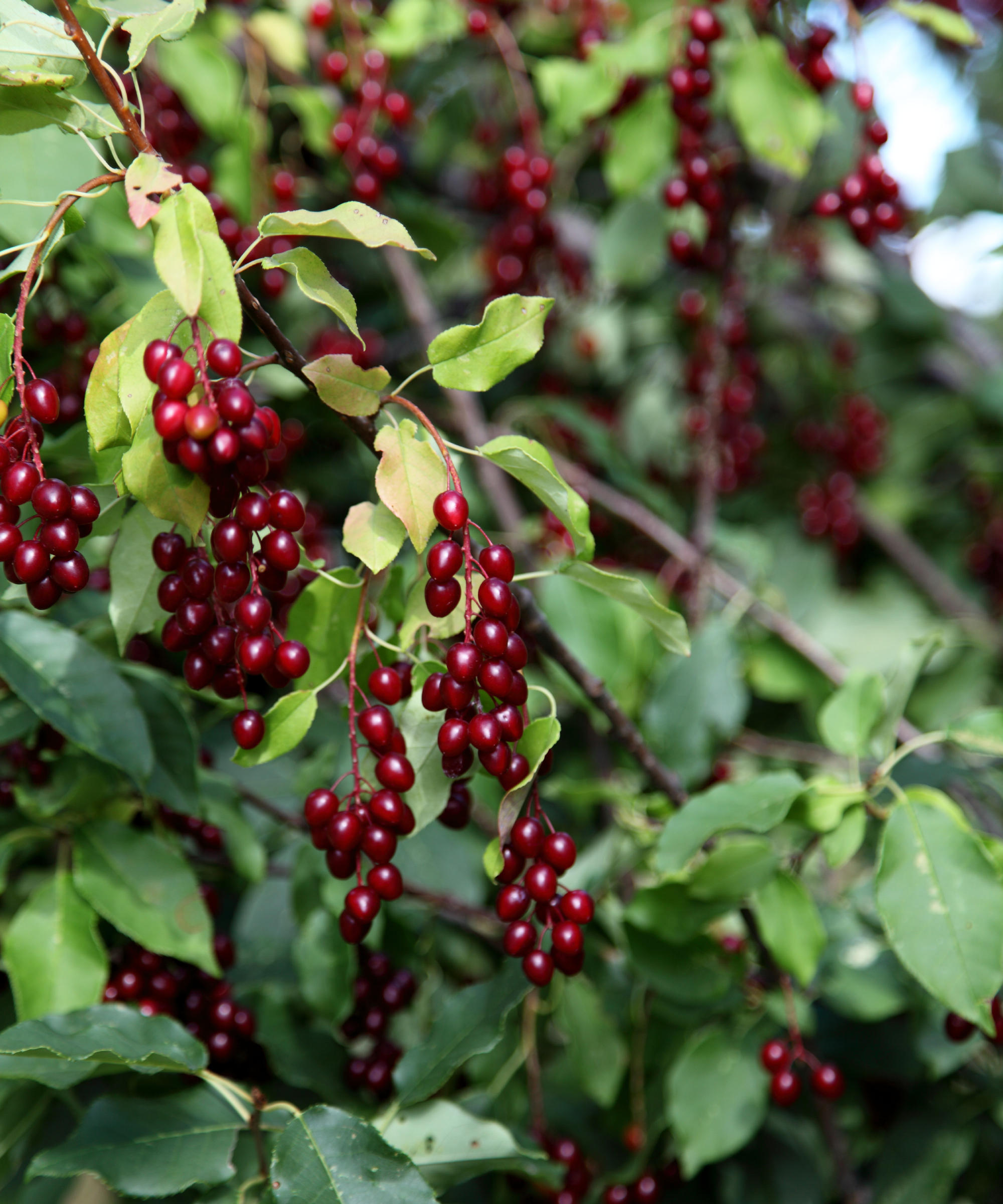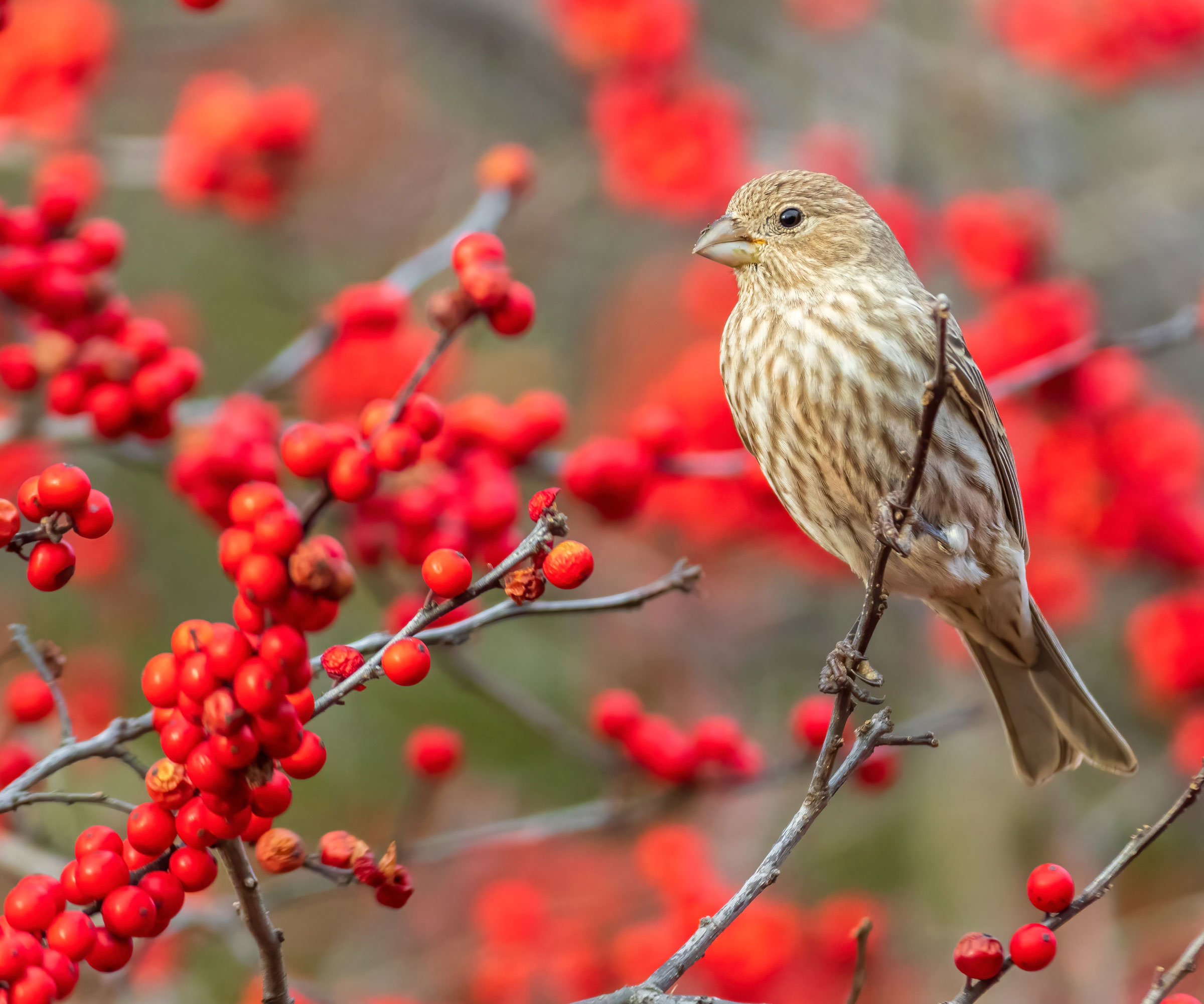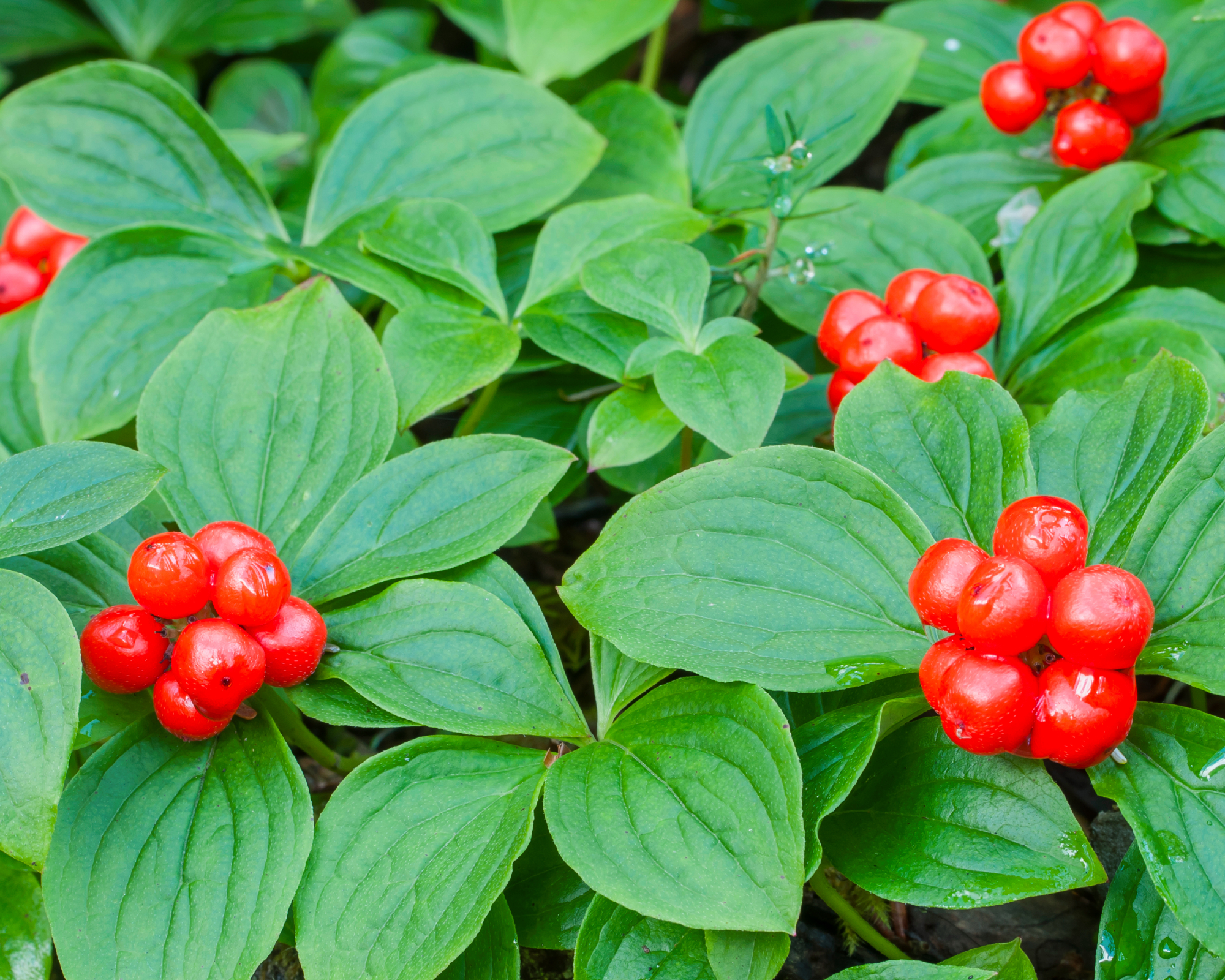11 Trees and Shrubs With Red Berries for a Bright and Cheery Winter Landscape
Add a pop of festive color to the dreary winter landscape with one of these trees and bushes with red berries. They provide instant cheer that lasts all season.
Laura Walters

Nothing in nature says Christmas louder than a tree or bush with red berries and green leaves. But these festive plants aren’t just good for the holidays. They add visual interest all winter long, which is a tall order for many cold climates.
Although winter is a time of dormancy for most plants, one way to spruce up the season is to grow trees and bushes with red berries. Many of these stunning plants for winter color develop bright berries in the fall that remain all the way through winter.
As a bonus, many native trees and shrubs with winter berries can help feed local wildlife, making them a wonderful part of a sustainable garden. I’ll share the most attractive trees and bushes with red berries to grow in your yard for a pop of seasonal color.
Benefits of Red Berries
Many trees and shrubs, whether they are native or not, produce colorful berries that brighten up fall and winter gardens in a variety of USDA growing zones. Even if you don’t have a harsh winter, a bush or tree with red berries is still a pretty garden element and adds a nice contrast to foliage and flowers.
While you can find plants with berries in other colors, red is ideal for a festive landscape. White berries blend in with the snow, though they do look striking against fall foliage and brown or gray bark. Some bushes and trees produce darker purple or black berries, but those can be difficult to see even against winter snow. Red is a common color for berries and often the most striking for four-season appeal in the landscape.

Best Trees & Bushes for Red Berries
Red berries on shrubs and trees are more common than you might think, but not all plants bear fruit around the holidays. That’s why I’ve compiled a list of trees and shrubs that produce red berries and hold onto their fruit all autumn and into winter, to help you find bright and cheery choices for your holiday garden.
In addition to their beauty, these plants help wild birds and small mammals make it through the cold season with plenty of food.
Sign up for the Gardening Know How newsletter today and receive a free copy of our e-book "How to Grow Delicious Tomatoes".
1. American Cranberrybush

The American cranberrybush (Viburnum opulus var. americanum) is a large native shrub that grows up to 12 feet (3.7 m) wide and tall. American cranberrybush has spring flowers and fall berries that native wildlife and gardeners alike will both enjoy.
The American cranberrybush is different from the cranberry plant that produces everyone’s favorite Thanksgiving fruit sauce. But you can also eat the berries from the American cranberrybush as well, although they are bitter. Use them in jams and jellies, like you would regular cranberries. For a more compact plant, try the ‘Hahs’ cultivar.
Buy a high-quality American cranberrybush from the Arbor Day Foundation.
2. Red Chokeberry

One berry bush that is less well known, but very beautiful is the red chokeberry bush (Aronia arbutifolia). The tart berries appear in summer and are excellent for jams. The bush also has the added ornamental appeal of shiny green leaves that turn reddish-purple in fall.
Try ‘Brilliantissima’ from Green Promise Farms on Amazon for exceptional berries.
3. Red Chokecherry

Yes, you read that right. Unlike the last shrub on the list, this small tree is called red chokecherry (Prunus virginiana). It produces pretty white flowers in spring and red berries in fall. Like chokeberries, the red chokecherry fruit is also excellent for making jams and jellies, but be careful because the seeds are poisonous.
You can buy red chokecherry trees from Walmart.
4. Winterberry

The name says it all for this native holly bush. Winterberry (Ilex verticillata) can grow up to 8 feet (2.4 m) and first develops its bright red berries in late summer. The berries persist throughout the winter. But unlike evergreen types of holly bushes, winterberry loses its leaves so the berries become the stars of the show.
Choose a female and a male shrub to ensure you get berries. The bright red fruit is beloved by the birds as well. You can find both female winterberry bushes and male winterberry bushes from Fast Growing Trees.
5. Bunchberry

Bunchberry (Cornus canadensis) is a low-growing shrub in the dogwood family. It is extremely cold hardy, surviving weather down to -40°F (-40°C) in winter, and can be grown in some of the coldest climates.
This shrub is native to northern parts of the United States and requires acidic soil to thrive. Enjoy its white flowers in early summer, bright red leaves in fall, and clusters of red berries in winter.
Get a bunchberry plant from Proven Winners at a local nursery near you.
6. Cranberry Cotoneaster

We’ve mentioned cranberry shrubs, but how about cranberry cotoneaster (Cotoneaster apiculatus)? Though it doesn’t get very tall, reaching no more than 3 feet (1 m) high, it makes up for it by spreading. The small, pink spring blossoms give way to round, blood-red fruit that lasts into winter.
Buy a cranberry cotoneaster today from the Home Depot.
7. Hawthorn

Hawthorns (Crataegus spp.) are also small flowering trees with red berries. They produce white spring flowers that turn into fall and winter fruits in shades of red. Be aware, though, that some hawthorns may have long, nasty thorns. But their beautiful red berries that light up the winter and hang on into the cold season make up for it.
For the most striking berries, look for ‘Washington’ or ‘Winter King’ hawthorns, both of which are available from the Arbor Day Foundation.
8. Eastern Wahoo

Eastern wahoo (Euonymus atropurpureus) is sometimes considered a large shrub, but it can also be classed as a small tree. This type of euonymus grows up to 12 feet (3.7 m) tall and has dark purple flowers in spring that produce an interesting, berry-like fruit in fall. The fruit is pink or purple but splits in fall to reveal its reddish-orange aril inside. This native plant is a great alternative to its invasive relative, burning bush.
This shrub can be a bit hard to find. Check out local native plant nurseries or buy Eastern wahoo seeds from Etsy to start your own plants at home.
9. American Holly

A large evergreen tree with red berries, the American holly (Ilex opaca) is a classic choice for winter garden interest. It is similar to English holly, the plant often associated with Christmas for its cheery red berries. The American holly also has leaves that are glossy with sharp spines and berries that are a jolly shade of red. This tree can also grow as tall as 60 feet (18 m) in the right conditions.
Get a beautiful 'Lacquerberry' American holly tree today from Etsy.
10. Longstalk Holly

American holly isn’t the only other festive type of holly that qualifies for this list. Less well-known, longstalk holly (Ilex pedunculosa) pleases with its rich, dark green spineless leaves and shiny red berries. It grows up to 30 feet (10 m) and is perfect for a specimen tree that provides colorful winter interest.
Try the stunning variegated cultivar called ‘Frosty Morn’ from Etsy for a truly lovely winter display.
11. Staghorn Sumac

Another small tree, staghorn sumac (Rhus typhina), is one of the first plants to blaze in colorful fall foliage. It morphs from yellow to orange and red. Female sumac trees produce upright fruit clusters and the berries turn brilliant red in fall. These native shrubs hang onto their fruit through winter, adding a lovely architectural element to the winter landscape.
Plant a ‘Tiger Eyes’ staghorn sumac from Fast Growing Trees for striking lime green summer foliage and bright red berries.

Mary Ellen Ellis has been gardening for over 20 years. With degrees in Chemistry and Biology, Mary Ellen's specialties are flowers, native plants, and herbs.
- Laura WaltersContent Editor

